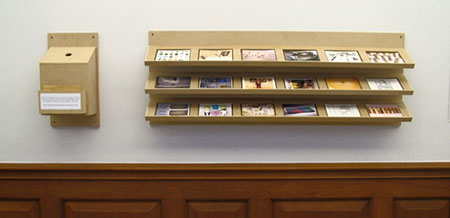Are the images of artworks, such as those found in art books, a different kind of object to the original? What is the relationship of the object to its referrent? How can art reproduction be a creative act?
The Imaginary Museum is produced in response to the tradition of artists and theorists interrogating the museum archive format to investigate and expose the politics of collection and display. In direct response to the theories of Andre Malraux, Walter Benjamin and Aby Warburg, the project aims to understand and communicate the ways that art history is made, and how artists engage with the collection and categorisation of art.
Directly referencing the work of André Malraux, in the first volume of ‘The Psychology of Art’ entitled ‘The Museum without Walls’, the concept of the project began with the idea of photographic reproduction in books as the basis for the democratisation of visual art. The project is a continuation of an earlier version of the concept, which was held at The Tetley, Leeds in March 2014.
This iteration of the project will focus specifically on the relationship between the image and the artwork within the Art Library. The ‘museum’, displayed on a postcard wall rack will be a series of 18 postcard reproductions selected from an open call. Postcards will be paid for by the project curator. The audience will be able to select from the postcards, in part or in whole, by leaving a suggested donation in a nearby honesty box. There will also be small branded envelopes for audiences to keep their selection in, thereby creating their own imaginary museum.
These images can reference objects and artworks, as well the nature of the art library as archive through imagined collections, systems, documentation, and classifications of art. Depicting these multiple categorisation strategies as single postcard images also allows the viewer to consider the idea of the archive not only as a container for housing historical objects, but as a cultural artefact in its own right. In this way, the art library can be seen as a series of networks, within each book, and within the way that each of these books are classified.
Following the exhibition, each of the images and texts provided by the artists will be collected in the form of an artist’s book which will also include an essay about the exhibition. This will also be issued to the artists involved. Images and texts will also be featured on the project website.
Louise Atkinson |





